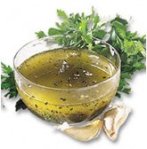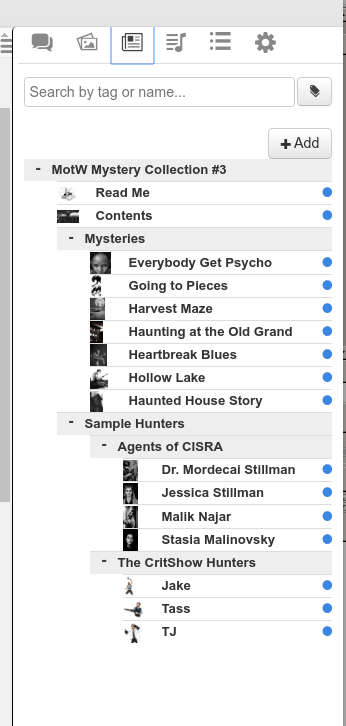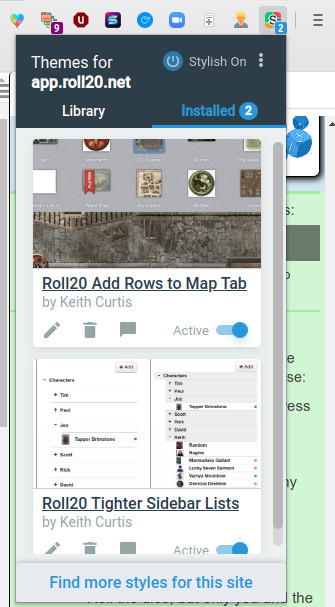 We’ve been trying to make most of our food from scratch, and the most entrenched bastion of prepared food for us — and many other people, I’m sure — is that of condiments. I can easily whip together a rice or pasta dish better than anything coming out of a box, and I hardly ever walk down the frozen food aisles except when I’m looking for ice cream or, rarely, frozen fruit or vegetables, but there were still a lot of store-bought condiment jars in our refrigerator and pantry, so I decided to tackle this challenge. Here are my conclusions so far.
We’ve been trying to make most of our food from scratch, and the most entrenched bastion of prepared food for us — and many other people, I’m sure — is that of condiments. I can easily whip together a rice or pasta dish better than anything coming out of a box, and I hardly ever walk down the frozen food aisles except when I’m looking for ice cream or, rarely, frozen fruit or vegetables, but there were still a lot of store-bought condiment jars in our refrigerator and pantry, so I decided to tackle this challenge. Here are my conclusions so far.
Salad dressings and marinades — There is absolutely no reason for me to buy salad dressing. While it is entirely possible, if one insists, to come up with a dressing recipe that is complicated to make, I can’t think of a single commercially available dressing that isn’t easy and much tastier to replicate at home. Lots and lots of easy recipes exist, the time and equipment requirements are tiny, and the ingredients make the home-made dressings tastier and cheaper.
Sauces — Sauces of all kinds are almost always better and cheaper made at home, and generally quite easy. I do continue to buy some “bases”, especially the soy sauce, nam pla, hoisin, and sriracha family, and the occasional curry base concentrate. But anything more complicated than that is made at home and it doesn’t take much time or effort. Most sauces don’t require any complicated equipment either, although an immersion (stick) blender can sometimes be useful.
Guacamole and salsa — So easy to make with fresh ingredients, I never buy the ready-made stuff anymore. Easy to make by hand, but even easier with a food processor. Make them a few hours in advance so the flavours have time to develop and blend.
Peanut (and other nut) butter — It’s definitely tastier to make our own peanut butter from bulk roasted peanuts. However, so far it’s not cheaper. An added catch is that places that do sell good quality roasted peanuts at a reasonable price tend to also have a grinder, so it’s only worth it to make it at home if you can’t find a market with a grinder, you have a food processor, and you want the fresh taste.
Ketchup — Better and cheaper home-made, hands down. You can adjust the sugar and spice level to taste, and making it from fresh tomatoes in summer when produce prices are down gives you many jars to vacuum-seal or freeze, at a fraction of the price. You need a food processor, blender, or immersion blender if you want to get a smooth texture.
Relish — If you use fresh summer vegetables at their cheapest, relish is easy to make in large batches. It takes hardly more time and effort to make a large batch rather than a small one, so you might as well make many jars and vacuum-seal or freeze them. While it can be made without any special equipment, relish is a lot less work when you have a food processor or at least a manual food mill, becoming in fact dead easy. And the result is very flavourful, at about a third of the price of the cheapest store-bought relish even when using the highest quality ingredients.
Mayonnaise and Aïoli — Very easy and inexpensive to make. You can make this with a whisk and a strong arm, but a hand mixer, stand mixer, immersion blender, or food processor make it nearly effortless. Bonus, you can adjust the flavour to suit your taste, pick the right oil for your diet, etc., and you can make small batches to use as needed.
Mustard — Very easy to make, but requires a blender, food processor, food mill, or immersion blender. However, there are so many recipe variations that it can take a lot of tries to get the exact flavour you’re after (somehow, it seemed easier with the other condiments.) Can be made in small or large batches as needed.
So far, most of the condiments I have tried making at home are well worth the relatively small amount of effort.






